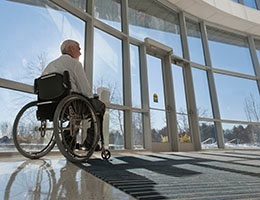 Preventable hospital readmissions cost taxpayers billions of dollars each year. As we move further into the age of healthcare reform, practitioners will feel rising pressure to reduce costs and decrease unnecessary and preventable re-hospitalizations.
Preventable hospital readmissions cost taxpayers billions of dollars each year. As we move further into the age of healthcare reform, practitioners will feel rising pressure to reduce costs and decrease unnecessary and preventable re-hospitalizations.
Providers cannot and should not avoid the readmission of patients when medical or surgical situations require inpatient care. However, a fair percentage of unintended readmissions can and will be reduced by implementation of initiatives that not only improve quality, but support patients as they transition through the care continuum.
Let’s examine 7 strategies to reduce hospital readmissions:
1) Understand Current Policy
 The Affordable Care Act (ACA) established the Hospital Readmissions Reduction Program, which requires the Centers for Medicare and Medicaid Services (CMS) to begin reducing reimbursement payments to hospitals that have excess 30-day readmission rates.
The Affordable Care Act (ACA) established the Hospital Readmissions Reduction Program, which requires the Centers for Medicare and Medicaid Services (CMS) to begin reducing reimbursement payments to hospitals that have excess 30-day readmission rates.
CMS utilizes a “readmission ratio” to calculate reimbursement payments and penalties. The ratio measures a hospital’s performance as compared to the national average for each medical condition. The program initially covered the conditions of acute myocardial infarction (AMI), heart failure (HF) and pneumonia (PN). In 2015, chronic obstructive pulmonary disease (COPD), elective total hip arthroplasty (THA) and total knee arthroplasty (TKA) were added. In 2017, coronary artery bypass graft (CABG) surgery will be added to the list.
2) Identify Patients at High Risk for Readmission
There are many characteristics and circumstances that place individual patients at a higher risk of being readmitted soon after a hospital discharge. Among the influences for re-hospitalization are specific medical / surgical diagnoses, co-morbidities, emotional factors, personal issues, mental health factors, older age, multiple medications and associated reactions, level of caregiver and home support, history of readmissions, financial issues and deficient living conditions.
3) Utilize Medication Reconciliation
“Medication reconciliation is the process of comparing a patient's medication orders to all of the medications that the patient has been taking” (The Joint Commission). Medication-related adverse events after hospital discharge are a significant cause of readmissions.
A study by Dr. Alan Foster found that 11% of discharged patients suffered an adverse drug event; 27% of the events were believed to be preventable. Research by Kilcup et al. revealed that patients who received a medication review and reconciliation via a pharmacist phone call post-discharge had significantly lower readmission rates at 7 days (0.8% vs. 0.4%) and 14 days (5% vs. 9%) after discharge.
4) Prevent Healthcare-Acquired Infections
Approximately one out of every twenty hospitalized patients receives treatment for a healthcare-associated infection (HAI). The following categories of HAIs account for approximately 83% of all HAIs:
- Catheter-associated urinary tract infections (CAUTI)
- Central line-associated bloodstream infections (CLABSI)
- Surgical site infections (SSI)
- Ventilator-associated pneumonia (VAP)
Among the organisms responsible for many HAIs are:
- Methicillin-resistant staphylococcus aureus (MRSA)
- Vancomycin-resistant enterococci (VRE)
- Clostridium difficile (CD)
Researchers at the University of Maryland found that hospital patients who had positive clinical cultures (VRE, MRSA and CD) more than 48 hours after admission had a higher risk of being re-hospitalized.
5) Optimize Utilization of Technology
Each day, thousands upon thousands of hospital patients maneuver their way through the healthcare system. As patients are moved from admission to inpatient medical, surgical, and specialty units and eventually discharged, a myriad of complex interactions take place.
Not only do care providers require up-to-date patient information and data, but the hospital’s command center must keep track of a patient’s location as well as material and equipment required to treat the patient’s condition. Technological systems including, Computer Provider Order Entry, Decision Support, Bar Code Medication Administration, Decision Support and Robotic Pharmacies, can play important patient safety roles as patients move through the healthcare care continuum.
6) Improve Handoff Communication
Inadequate handoffs may result in: adverse events, delay/omission of treatment, inappropriate treatment, increased hospital length of stay / costs, patient harm and avoidable readmissions. According to The Joint Commission Center for Transforming Healthcare: “An estimated 80 percent of serious medical errors involve miscommunication between caregivers when patients are transferred or handed-off.”
The Joint Commission recommends that communication during handoffs:
- Be two-way conversations.
- Eliminate or limit interruptions.
- Provide time for the receiving provider to ask questions.
- Contain up-to-date information on condition, treatment, care plan, services required, recent changes and anticipated problems.
- Afford appropriate time for the receiver to review the patient’s history.
- Confirm receiver understanding using the teach-back technique.
7) Use a Transition of Care Model
The 6 strategies described above comprise individual components of an overall plan to improve the quality of patient care in order to decrease hospital readmissions. Transition of Care models package these individual components into an organized and standardized hospital program to assist and educate patients as they transition through the care continuum from admission to post-discharge.
Transition of Care models include multidisciplinary collaboration, education and communication to ensure that optimum inpatient care is provided. In addition, the discharge process is coordinated with primary care providers, where patients receive follow-up phone calls or home visits as necessary.
Examples of Transition of Care models available include:
- BOOST - Better Outcomes for Older Adults through Safe Transitions
- GRACE - Geriatric Resources for Assessment
- TCM - Transitional Care Model
- Project RED - Re-Engineered Discharge
- Bridge Model
- Care of Elders
- Guided Care
- STAAR - State Action on Avoidable Re-Hospitalizations
These 7 strategies can be easily and effectively employed to reduce the rate of unplanned readmissions. Each strategy is geared to provide solutions to specific care issues that affect patient outcomes; however, they should be implemented as part of a global transition of care plan that considers the entire patient hospital and post-discharge experience.
Interested in learning more for CME?
Review our course: 7 Strategies to Reduce Hospital Readmissions


